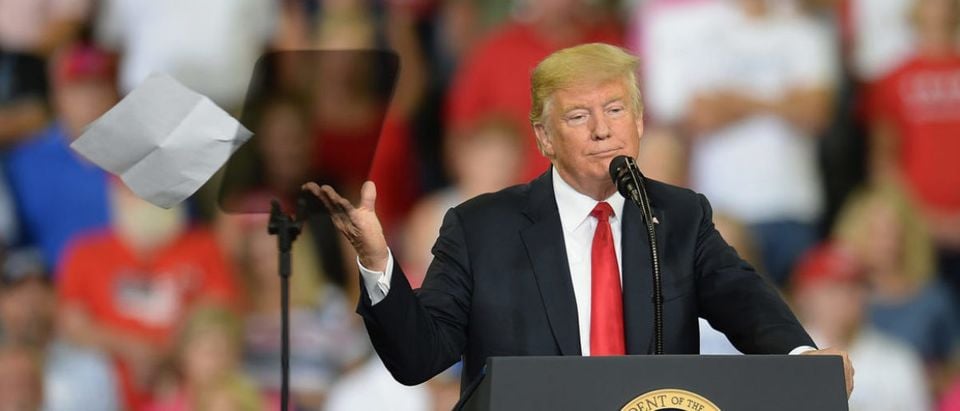Using a variety of methods, presidents have long reveled in the ability to goad lawmakers into taking action.
President Reagan, for instance, urged that citizens call recalcitrant lawmakers to support his historic tax reforms. But few have proven as bold as President Trump, who suggested this week that lawmakers are cooking up a 10-percent tax cut for the middle class shortly before midterm elections.
Never mind that Congress will have no time to meet, let alone draft up an entire new tax policy proposal before facing reelection.
Assuming the President’s real promise to voters is for action after the midterms (if the Republicans win), how realistic is further relief for working American families? While money is almost always better spent in the hands of families than bureaucrats, tax cuts need to remain broad-based in order to have staying power.
Washington must also get serious about cutting spending and reduce deficits, which merely send a message to taxpayers that the government will eventually raise rates again.
Given the successes of the Tax Cuts and Jobs Act (TCJA), it’s entirely understandable that President Trump would want to double down in pro-growth tax policy.
After slashing individual rates across the board, reducing the corporate rate to 21 percent from 35 percent, and relieving America’s small businesses from paying the top marginal individual rate, businesses promptly announced new investments complete with new job openings and higher wages.
As of October 23, Americans for Tax Reform has collected more than 730 examples of tax reform “good news,” including “pay raises, bonuses, 401(k) match increases, expansions, benefit increases, and utility rate reductions.”
Most recently, for example, baked goods manufacturer Baker Boy is “purchasing new equipment, expanding business operations, and hiring new employees” thanks to the tax cuts.
But would the President’s proposed cuts fuel even further growth across America? The answer is a big “it depends.”
Currently, married couples filing jointly in the “middle class” tax bracket (earning from $19,050-$77,400) pay a 12 percent marginal tax rate on income, down from 15 percent thanks to the TCJA. A 10-percent reduction would mean a new rate of 10.8 percent, amounting to a roughly $500 tax cut for the median-earning American household.
Just under 20 million households earn $45,000 to $65,000, implying that President Trump’s tax cut proposal would amount to approximately $10 billion in annual savings for America’s middle-class households. While this is a rough estimate subject to multiple caveats, whatever the final figure, the amount of relief pales in comparison to the TCJA’s $100 billion-plus yearly relief.
When cuts are targeted narrowly to a sliver of the tax base, problems begin to emerge. Already, the marginal tax rate jumps for married couples at the $77,400 mark from 12 percent to 22 percent.
Reducing middle-income taxes from 12 percent to 10.2 percent would make for an even wider jump, distorting the job market and discouraging efforts to work harder and take on more hours and clients.
In the modern service economy, professionals and contract workers, such as ridesharing drivers and freelance writers can readily vary their workload in response to changing rates.
Workers may already be on the fence about driving that extra mile, and a sharp tax drop-off may keep that driver from going out. The same decisions vex stay-at-home parents, who are regularly on the fence about re–entering the labor force after years of staying home.
Tax cuts, then, should be broad-based, with any reductions happening across all brackets instead of one. But while all tax relief is welcome, overspending must be kept under control to keep the relief permanent for workers.
This year, U.S. federal debt topped $21 trillion, more than $165,000 for every American household.
Passing historic tax relief while refusing to cut spending and running a $779 billion dollar budget deficit effectively tells taxpayers that the days of relief are numbered and limits economy-wide growth.
President Trump can avoid this problem and unleash our economy’s true potential by pushing for broad-based relief with offsetting cuts in spending.
Ross Marchand is the director of policy for the Taxpayers Protection Alliance.
The views and opinions expressed in this commentary are those of the author and do not reflect the official position of The Daily Caller.


